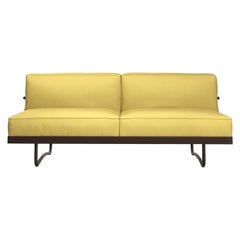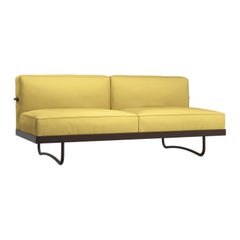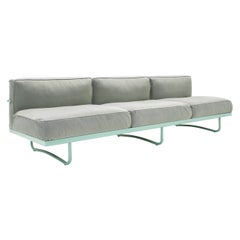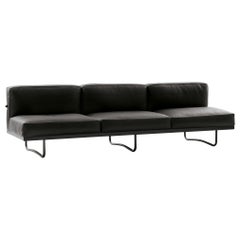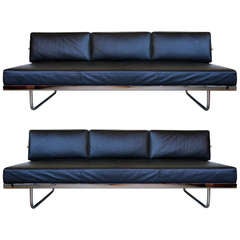Cassina Le Corbusier Lc5
2010s Italian Mid-Century Modern Sofas
Metal
2010s Italian Mid-Century Modern Sofas
Metal
2010s Italian Mid-Century Modern Sofas
Metal
Mid-20th Century Italian Bauhaus Sofas
Steel
2010s Italian Mid-Century Modern Sofas
Metal
Recent Sales
Late 20th Century Italian Modern Sofas
Chrome
Late 20th Century Italian Mid-Century Modern Sofas
Chrome
Mid-20th Century Italian Bauhaus Sofas
Steel, Chrome
Early 2000s Italian Modern Daybeds
Stainless Steel
Vintage 1970s Italian Mid-Century Modern Sofas
Metal
Mid-20th Century Italian Bauhaus Sofas
Steel
1990s Italian Mid-Century Modern Sofas
Stainless Steel
People Also Browsed
Vintage 1960s Dutch Mid-Century Modern Daybeds
Teak, Upholstery
Vintage 1950s Italian Mid-Century Modern Chairs
Velvet
2010s South African Minimalist Pedestals
Hardwood
21st Century and Contemporary Brazilian Modern Dining Room Chairs
Wood
21st Century and Contemporary Swedish Scandinavian Modern Wall Lights an...
Metal
Vintage 1950s German Mid-Century Modern Stools
Metal
21st Century and Contemporary American Scandinavian Modern Wall Lights a...
Nickel, Brass
21st Century and Contemporary Swedish Mid-Century Modern Table Lamps
Textile
21st Century and Contemporary Italian Art Deco Wall Lights and Sconces
Brass
2010s Mexican Brutalist Contemporary Art
Wood
2010s Italian Modern Chandeliers and Pendants
Metal, Brass
2010s German Mid-Century Modern Chandeliers and Pendants
Brass
Vintage 1970s Italian Post-Modern Beds and Bed Frames
Leather, Wood
Vintage 1960s Italian Mid-Century Modern Sofas
Brass
Mid-20th Century Italian Mid-Century Modern Bookcases
Stained Glass, Wood
1990s Italian Post-Modern Loveseats
Steel, Chrome
Cassina Le Corbusier Lc5 For Sale on 1stDibs
How Much is a Cassina Le Corbusier Lc5?
Le Corbusier, Pierre Jeanneret, Charlotte Perriand Cassina for sale on 1stDibs
The trio of Charlotte Perriand, Le Corbusier and Pierre Jeanneret is known for its widely acclaimed and influential modernist furniture designs.
In the early 1920s, Charles-Édouard Jeanneret, the revered Swiss-French architect known professionally as Le Corbusier, entered into collaboration with his cousin, Pierre Jeanneret, who shared his grand vision for egalitarian building projects and interior design. They later recruited the pioneering young female architect Charlotte Perriand to join their venture.
Perriand's installation Bar sous le toit (“bar under the roof”), a recreation of part of her own apartment shown at the 1927 Salon d’Automne in Paris, caught Le Corbusier's attention and prompted the cousins to recruit her to work at their architecture practice. She would be tasked with designing interiors and furniture. Such status was rare for a woman at the time — in fact, when Perriand sought work at Le Corbusier’s atelier mere months before the exhibition, he famously dismissed her with a sexist remark.
The collective called their shared project l’équipement d'intérieur de l’habitation (“the interior equipment of the house”), and they designed furniture that remains celebrated today. The LC series of armchairs, lounge chairs and sofas, for example, saw the designers working with tubular chrome steel and plush foam cushions upholstered in leather. Bereft of ornament and prized for its functionality, the series is currently manufactured by Cassina. The cohort's LC4 chaise lounge was displayed at the 1929 Salon d’Automne, and the spare but sculptural seat — as well as the group’s other furnishings — influenced the likes of Willy Rizzo as well as a range of other modernist designers and furniture innovators.
Reportedly owing to political differences, the trio’s collaboration ended in 1937. Le Corbusier and Pierre continued working together, primarily in architecture.
In the early 1950s, at the invitation of Indian Prime Minister Jawaharlal Nehru, Le Corbusier and his cousin collaborated on a building project in Chandigarh, India. While the Chandigarh project is most frequently associated with Le Corbusier, he didn’t actually move to India and instead monitored progress during visits to the region. Pierre, however, was extensively involved. As the project’s first chief architect, Pierre remained onsite to oversee implementation of design and to coordinate construction of schools, government housing, shopping centers and more.
In 1940, Charlotte Perriand moved to Japan after France fell to Nazi forces. She was offered a position at the Japanese Ministry of Trade and Industry as a consultant on the country’s industrial arts. While there, Perriand adopted many Japanese artistic principles and incorporated them into her own revolutionary furniture designs. She would also closely collaborate with self-taught French furniture designer Jean Prouvé in the years that followed.
Time has shown that some of the works attributed to the Jeanneret cousins are either Perriand’s own designs or she was an uncredited contributor.
On 1stDibs, find an array of vintage Charlotte Perriand, Le Corbusier and Pierre Jeanneret furniture, including tables, storage cabinets and lighting.
Finding the Right Sofas for You
Black leather, silk velvet cushions, breathable bouclé fabric — when shopping for antique or vintage sofas, today’s couch connoisseurs have much to choose from in terms of style and shape. But it wasn’t always thus.
The sofa is typically defined as a long upholstered seat that features a back and arms and is intended for two or more people. While the term “couch” comes from the Old French couche, meaning to lie down, and sofa has Eastern origins, both are forms of divan, a Turkish word that means an elongated cushioned seat. Bench-like seating in Ancient Greece, which was padded with soft blankets, was called klinai. No matter how you spell it, sofa just means comfort, at least it does today.
In the early days of sofa design, upholstery consisted of horsehair or dried moss. Sofas that originated in countries such as France during the 17th century were more integral to decor than they were to comfort. Like most Baroque furnishings from the region, they frequently comprised heavy, gilded mahogany frames and were upholstered in floral Beauvais tapestry. Today, options abound when it comes to style and material, with authentic leather offerings and classy steel settees. Plush, velvet chesterfields represent the platonic ideal of coziness.
Vladimir Kagan’s iconic sofa designs, such as the Crescent and the Serpentine — which, like the sectional sofas of the 1960s created by furniture makers such as Harvey Probber, are quite popular among mid-century modern furniture enthusiasts — showcase the spectrum of style available to modern consumers. Those looking to make a statement can turn to Studio 65’s lip-shaped Bocca sofa, which was inspired by the work of Salvador Dalí. Elsewhere, the furniture of the 1970s evokes an era when experimentation ruled, or at least provided a reason to break the rules. Just about every area of society felt a sudden urge to be wayward, to push boundaries — and buttons. Vintage leather sofas of that decade are characterized by a rare blending of the showy and organic.
With so many options, it’s important to explore and find the perfect furniture for your space. Paying attention to the lines of the cushions as well as the flow from the backrest into the arms is crucial to identifying a cohesive new piece for your home or office.
Fortunately, with styles from every era — and even round sofas — there’s a luxurious piece for every space. Deck out your living room with an Art Deco lounge or go retro with a nostalgic '80s design. No matter your sitting vision, the right piece is waiting for you in the expansive collection of unique sofas on 1stDibs.

